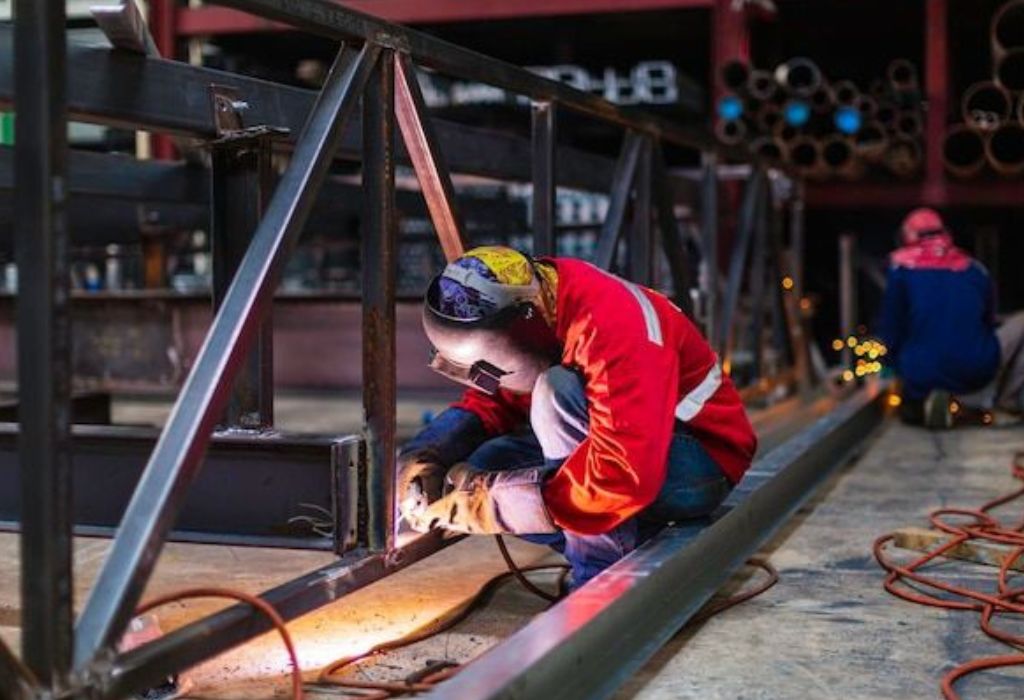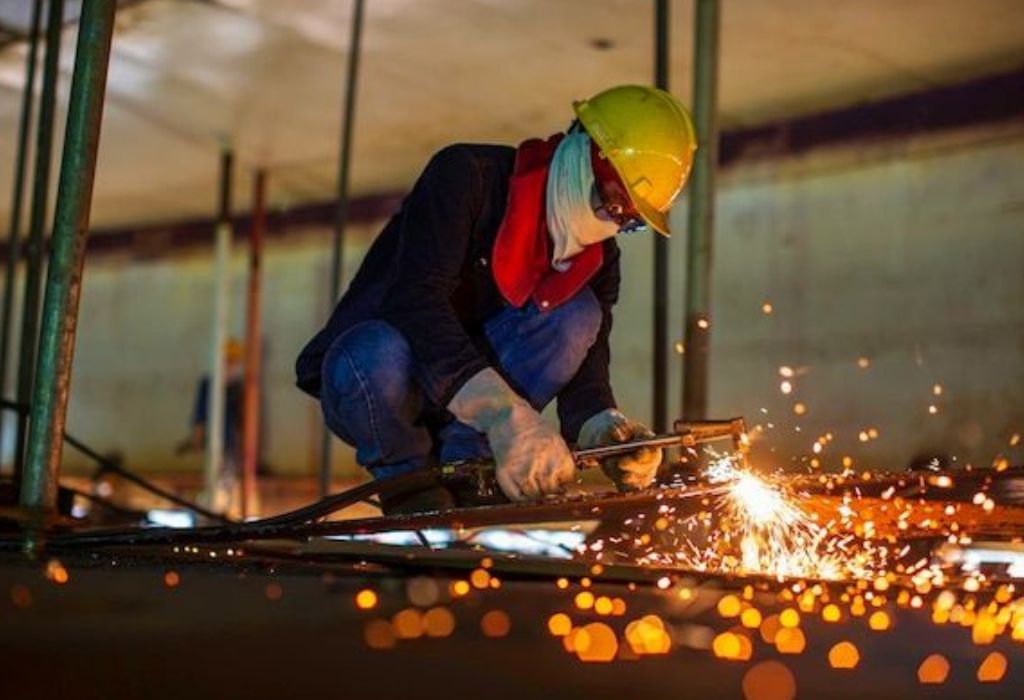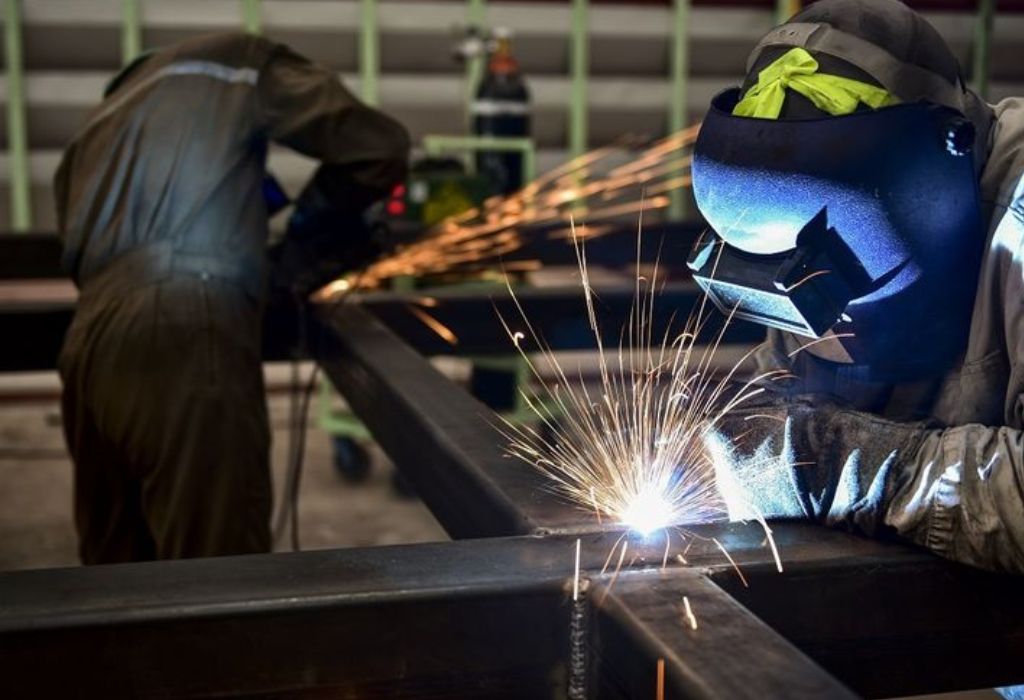You’re halfway through a project when your welder sputters, overheats, or simply can’t handle the metal thickness you’re working on.
The arc dies, and so does your productivity. Most welders face this frustration because they bought a machine that didn’t match their needs.
Learning how to choose welding machine correctly is more than comparing price tags. It’s about understanding the relationship between power, process, materials, and duty cycle. The right choice can transform messy, inconsistent welds into clean, professional joints that last for years.
The global welding equipment market was valued at $10.6 billion in 2024 and continues to grow as industries expand and automation rises (source).
Yet most first-time buyers rely on brand names or online reviews instead of real performance data.
In this detailed buyer’s guide, you’ll learn how to pick the perfect welding machine for your job — whether it’s automotive work, structural fabrication, or home repairs. We’ll break down the process, power, amperage, duty cycle, and safety factors step by step, ensuring your next purchase delivers the right balance of performance and longevity.
How to Choose Welding Machine — The Quick Primer

Before diving deep, remember this: the perfect welding machine matches your metal type, thickness, and working environment.
Your decision starts with four key pillars — process, power, materials, and budget. Every additional feature or control builds on these fundamentals.
What is the fastest way to narrow choices?
List your typical materials and their thickness range, then match them to compatible welding processes.
Which one factor eliminates the most models?
Input power. Your home or workshop’s available voltage (120V, 240V, or both) instantly filters your options.
Is multi-process worth it?
Yes, if you work with different metals or want flexibility. But single-process machines usually provide better performance for specialized tasks.
How do beginners avoid regret?
Buy a machine that meets your thickest anticipated material, not your lightest. That extra capacity ensures long-term use.
Step 1 — Define Materials, Thickness, and Joint Types
Everything begins with the metal you plan to weld. Mild steel, stainless steel, and aluminum all require different techniques and equipment.
Sheet metal panels (20–22 gauge) need low amperage and precise control, while heavy plate (3/8–1/2 inch) demands power and penetration.
Why does thickness matter most?
Because metal thickness determines the amperage range you’ll need. Each process has a recommended range — for example, 1/8-inch steel needs around 125A with MIG.
Does metal type change the process?
Absolutely. Aluminum prefers MIG with a spool gun or TIG for control, while stainless performs best with TIG for cleanliness and precision.
Do joint types affect selection?
Yes. Butt joints and fillet welds need deep penetration, while lap joints require heat balance. The wrong process could lead to warping or weak fusion.
What if I have mixed jobs?
Select a machine covering at least 80% of your needs. Renting or borrowing equipment for extreme cases is often cheaper than overbuying.
Step 2 — Pick the Right Welding Process
Each welding process has distinct strengths and weaknesses. Understanding them is crucial before deciding which machine to buy.
Stick (SMAW) is the simplest and most rugged process. It’s ideal for outdoor work and dirty metal but produces more spatter and requires cleanup.
MIG (GMAW) uses a continuous wire feed and shielding gas for fast, clean welds. It’s the top choice for beginners working on mild steel or automotive panels.
Flux-Cored (FCAW) is a variant of MIG that uses flux instead of gas, perfect for windy or outdoor conditions.
TIG (GTAW) provides the most precise welds, especially for thin materials and non-ferrous metals like aluminum and stainless steel.
Multi-process welders combine two or more types — excellent for hobbyists or small shops needing flexibility.
Which is best for beginners on mild steel?
MIG welding offers an easy learning curve and strong, clean results.
Which is best for thin stainless and aluminum?
TIG welding allows full control of heat and puddle size, ensuring no burn-through.
Which dominates farm and field repair?
Stick welding handles rusty or painted metal and performs well outdoors.
When to choose flux-core over MIG?
Use flux-core in windy conditions or when working on thicker materials without shielding gas.
When does multi-process shine?
In small workshops needing to switch between processes without buying multiple machines.
Step 3 — Power, Amperage Range, and Duty Cycle
Power defines performance. A welding machine’s input voltage and output amperage determine how thick it can weld.
A 120V welder handles sheet metal and light steel up to 1/8 inch. A 240V unit can handle thicker plate and longer welds. Dual-voltage models combine flexibility with portability.
How much amperage for 1/4-inch steel with MIG?
Typically 180–210 amps with a solid wire.
What duty cycle should you look for?
Aim for 30–40% at your working amperage. This means you can weld 3–4 minutes continuously before cooling.
Do I need 240V?
Yes, if you plan to weld 1/4-inch steel or thicker frequently.
What happens if duty cycle is exceeded?
The welder overheats and shuts down, reducing efficiency and lifespan.
Is dual-voltage necessary?
Ideal if you move between home and industrial environments where power sources differ.
Step 4 — Wire, Rod, and Shielding Gas Compatibility
Your machine must support the consumables that match your metal and process. Compatibility ensures clean welds and long torch life.
For MIG welders, verify the machine can handle standard wire sizes (.023–.045) and has appropriate drive rolls. Stick welders must accept common electrodes like E6011 or E7018. TIG welders should provide both AC and DC current for versatility.
Can all MIG machines weld aluminum?
Not all. You’ll need a spool gun or push-pull torch for reliable feeding.
Which gas for mild steel MIG?
C25 (75% Argon / 25% CO₂) is the standard for balanced penetration and minimal spatter.
Which rod for stick welding structural steel?
E7018 provides strong, low-hydrogen welds with clean bead appearance.
Do I need pulse for stainless?
Yes, pulse control minimizes heat input and prevents warping on thin sections.
What wire diameters are common?
.023–.030 for sheet metal, .035–.045 for general fabrication.
Step 5 — Inverter vs Transformer Machines

The debate between inverter and transformer welders continues, but understanding both helps you buy smarter.
Inverter welders are lightweight, energy-efficient, and packed with digital controls. They offer smooth arcs and modern features like pulse or synergic modes.
Transformer welders are heavier and simpler but nearly indestructible, perfect for rugged field environments.
Are inverters reliable now?
Yes, especially from reputable brands with proper cooling systems and surge protection.
Which control features matter most?
Inductance, run-in speed, 2T/4T control, hot start, arc force, and pre/post gas flow all improve weld quality.
Do digital displays help?
Absolutely. They show real-time voltage and amperage, making setup faster and repeatable.
When to choose transformer welders?
If you work outdoors in dusty, rough conditions or prioritize durability over portability.
Is pulse worth the investment?
Yes, particularly for aluminum and stainless steel — it reduces heat and improves bead appearance.
Step 6 — Portability, Build Quality, and Protection
Your welder should fit your workspace and withstand daily use. Portability is key for mobile jobs, while build quality ensures safety and reliability.
Weight and housing matter. Under 35 lbs is easily portable, while under 55 lbs with a cart suits most workshops. Machines built with metal cases and solid handles last longer in tough environments.
What weight is considered portable?
Anything below 35 lbs can be carried easily by one person.
Do I need an IP rating?
Yes, IP23 or higher protects against dust and light moisture.
Which cables last longer?
Copper cables with thick insulation and sturdy strain reliefs.
Does fan-on-demand improve durability?
Yes, it cools efficiently while reducing dust intake.
Can I run my welder on a generator?
Only if it’s rated for generator use and the generator provides clean, stable power.
Step 7 — Budget, Warranty, and Total Cost of Ownership
Your first purchase price isn’t the whole story. A welding machine’s true cost includes consumables, electricity, and long-term maintenance.
Budget realistically. Plan to spend an additional 30–60% on accessories like helmets, gloves, gas, and safety gear.
How much to budget beyond the machine?
At least one-third of your welder’s cost again for accessories and setup.
Are cheap welders okay for light work?
Yes, if they’re from reputable brands with available parts and warranty support.
What is total cost of ownership (TCO)?
It’s the sum of the purchase price, consumables, repairs, and electricity over the welder’s life.
Does brand reputation matter?
Yes. Established brands like Lincoln, Miller, or ESAB have better support and resale value.
Should I lease or buy gas cylinders?
Lease if you weld occasionally, but buy if you use gas regularly to save in the long term.
Step 8 — Safety and Electrical Requirements
Welding safety begins long before you strike an arc. Electrical setup and PPE are as important as machine specs.
Use a dedicated 50A breaker for 240V welders, and ensure wiring meets National Electrical Code (NEC) standards (source). Always ground the workpiece properly and keep cables away from sharp edges or puddles.
Minimum PPE required?
Auto-darkening helmet, flame-resistant jacket, gloves, and leather boots.
What power circuit is typical?
A 50A breaker with the correct outlet and 8-gauge wire for 240V machines.
Why is ventilation important?
Shielding gases can displace oxygen and welding fumes can be toxic.
How should grounding be handled?
Attach clamps to clean metal surfaces, and never share neutral circuits with other tools.
Is GFCI required?
Yes, especially for outdoor or damp environments to prevent electric shock.
Step 9 — Accessories, Setup, and Workflow
The right accessories improve productivity and weld quality.
Start with a welding cart, magnetic clamps, chipping hammer, wire brush, and nozzle gel. Keep consumables — tips, liners, and nozzles — within easy reach.
What accessories are essential from day one?
Helmet, gloves, magnets, cart, wire brush, and a spare contact tip kit.
How to cut setup time in half?
Label wires and gas lines, preset machine programs, and create a dedicated weld prep zone.
Do I need a spool gun immediately?
Only if aluminum welding is part of your first projects.
How to protect cables from damage?
Use cable covers and avoid running them over sharp edges or hot metal.
What maintenance extends machine life?
Clean filters, blow out dust monthly, and inspect torch liners regularly.
Step 10 — Decision Trees and Shortlists

Once you’ve assessed your needs, use these simple recommendations to shortlist the right welding machine.
If most work is 20-gauge to 1/8-inch steel indoors:
Choose a 120/240V MIG welder rated 140–180A with C25 gas.
If outdoors on thick farm equipment:
Pick a 240V Stick or flux-core machine with 180–250A output.
If you weld thin stainless or chromoly:
Choose a TIG welder with high-frequency start and foot pedal control.
If you run a small mixed-material shop:
Opt for a multi-process inverter around 200–220A.
If you travel for repair jobs:
Choose a lightweight inverter, generator-ready machine under 35 lbs.
Future Trends in Welding Machines
The welding industry is evolving fast. Expect smarter, lighter, and more efficient machines powered by software-driven control systems.
AI-assisted welders now adjust parameters automatically based on metal thickness and position. Battery-powered welders are emerging for field repairs without generators.
Robotic and cobot systems are increasingly used for repetitive welds, boosting precision and safety. Meanwhile, data logging and Bluetooth tracking are helping supervisors monitor weld quality in real-time.
Will AI make welding easier?
Yes, adaptive algorithms already optimize amperage and wire feed automatically.
Are battery welders practical yet?
Only for short jobs, but improving battery tech is expanding their potential.
Will robots replace human welders?
Not entirely — complex and custom jobs still need skilled hands.
Is pulse becoming standard?
Yes, even mid-range inverters now include pulse functions.
Will data logs matter?
Definitely. Weld data aids certification, training, and quality audits.
Conclusion
Choosing a welding machine isn’t just about power or price — it’s about precision, safety, and future-proofing your investment.
Start by understanding your metals, then choose the right process and power. Match your amperage range and duty cycle to your projects, and don’t ignore build quality, safety, or support.
A great welder isn’t the most expensive one — it’s the one that performs reliably, fits your workflow, and grows with your skills.
Call to Action: Save this buyer’s guide before you shop. Compare at least three models using the steps above, and ensure your next welding machine delivers the perfect balance of power, portability, and protection.

I’m Darrell Julian, the founder, lead writer, and hands-on welding enthusiast behind ArcWeldingPro.com. With more than 15 years of real-world welding experience, I created this platform to share what I’ve learned in the field, in the shop, and in the heat of the arc.


